


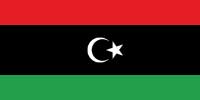
Museums in a Suitcase Foster Understanding in Libya
Translation:
Workshop Leader: What is the purpose of a museum?
Student: The museum is used for learning.
Workshop Leader: … What is the most important thing about museums?
Student: It teaches us about the daily lives of our ancestors.
The Need for “Museums in a suitcase.” Museums play a dynamic role in the community as places of learning and inspiration, and in spreading cultural heritage awareness. In Libya, the rich collections of more than twenty museums around the country have been largely off-limits to the public since the revolution of 2011. This decision was made by the local Department of Antiquities (DoA) to protect these resources during a time of ongoing strife where many cultural heritage sites and assets have been looted or damaged. Some cities in Libya have no museum, and have never had a public program connecting citizens to the country’s rich past.
In light of this situation, ASOR, in partnership with archaeologists from the DoA and members of the Boy Scouts and Girl Guides of Libya, has developed resources and programming to help fill the void created by the temporary closing of museums. There is a great need to provide education and stewardship activities that promote cultural understanding and counteract violent extremism and the destruction of shared heritage.
Background of “museums in a suitcase” (2018). With financial support from the U.S. Embassy to Libya and the U.S. Department of State, a group of Libyan archaeologists and scouts, under the supervision of ASOR, are conducting an education and public awareness program to protect cultural heritage. Talal Bariun, ASOR’s representative in Libya, has spent nearly three years working tirelessly to help this project grow. Bariun reports, “The energy with which participants around the country have engaged with this project goes beyond words. Now that we see such clear signs of success, it feels like we are realizing an old dream. And this dream began with a simple question: how can we continue to connect the Libyan youth to their culture and change the point of view of an entire generation at a time when all of our museums are closed?”
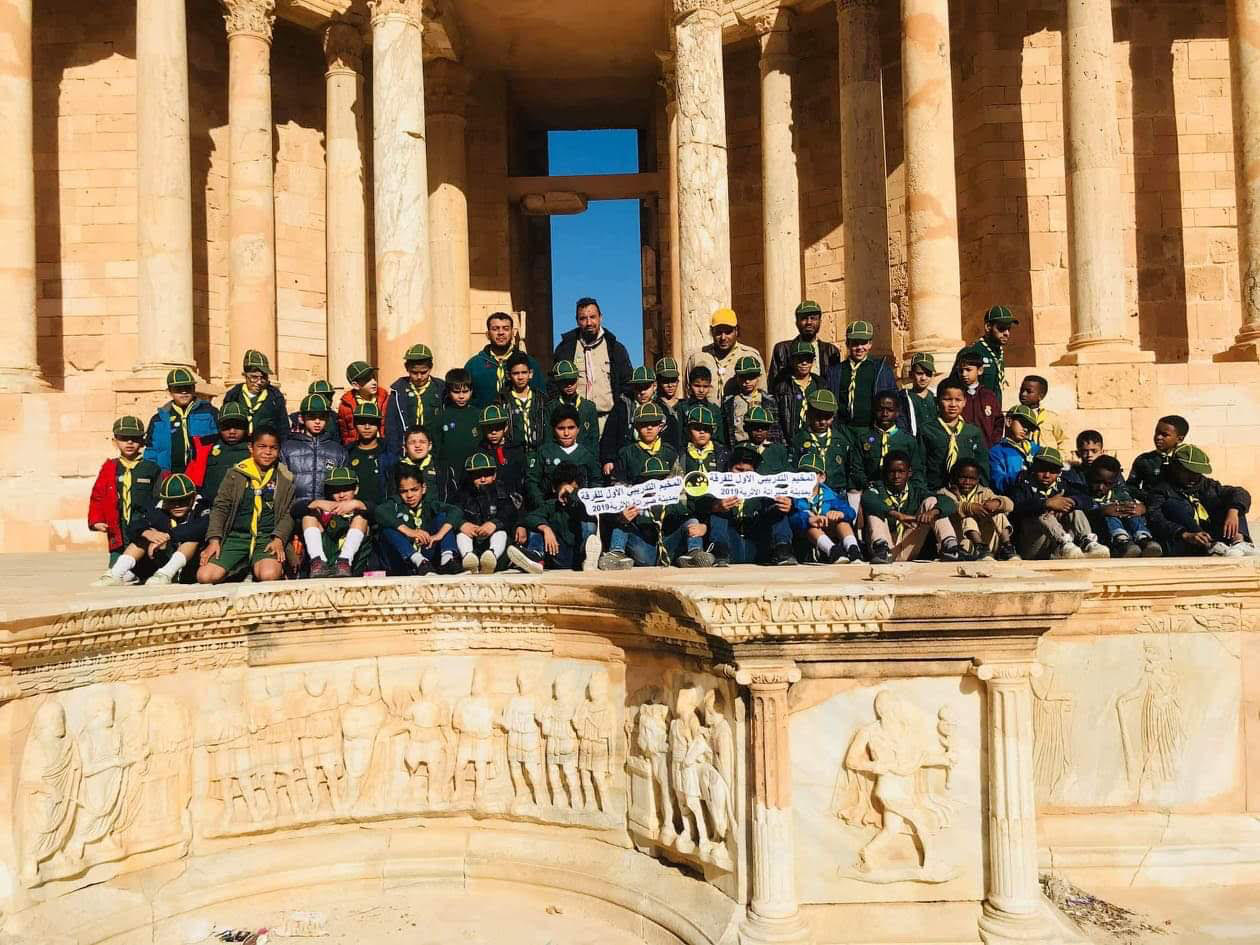
Scouts visit Sabratha in conjunction with the Museum in a Suitcase project
Inspired by a public outreach workshop hosted by Oberlin College and conducted by Paul Orselli in April 2018, participants sought ways to implement new outreach activities in Libya. As part of a previous collaborative agreement (in 2018) with the U.S. State Department, ASOR supported this team in the creation of “Museums in a Suitcase.” The cultural heritage “toolkits” were distributed widely throughout the country. Each bag contains materials providing an overview of Libyan cultural heritage and a quantity of locally sourced supplies that help facilitate a series of hands-on activities including a mock dig, the documentation of artifacts (replicas of vases and oil lamps), and the conservation of a broken (modern) clay jar.
Once these cultural heritage “toolkits” or “mobile musuems” are placed in the hands of trained teachers and professionals, they can be used multiple times. They thus provide the resources to hold Cultural Heritage Outreach and Awareness Events throughout Libya.
Newest phase (2019 and 2020). With new support in 2019 and 2020 from the U.S. Department of State’s Ambassadors Fund for Cultural Preservation (AFCP) and the Cultural Antiquities Task Force (CATF), ASOR has created an additional twelve suitcases—thus doubling the number of “mobile museums” available in Libya. Further, we have expanded the geographic outreach during this newest phase to include participants in Ghadames, Sabratha, Leptis Magna, Bani Walid, Sirte, al Beidah, Cyrene, Sebha, Yefren, Nalut, Ghat, Germa, Zuwara, Janzour, Tripoli and Benghazi (see the map below). In each location, key individuals affiliated with the Department of Antiquities, the Boy Scouts and Girl Guides of Libya, or local universities have been identified as the keeper of the bag and the one responsible for ongoing Cultural Heritage Outreach and Awareness Events in local schools and in other venues.
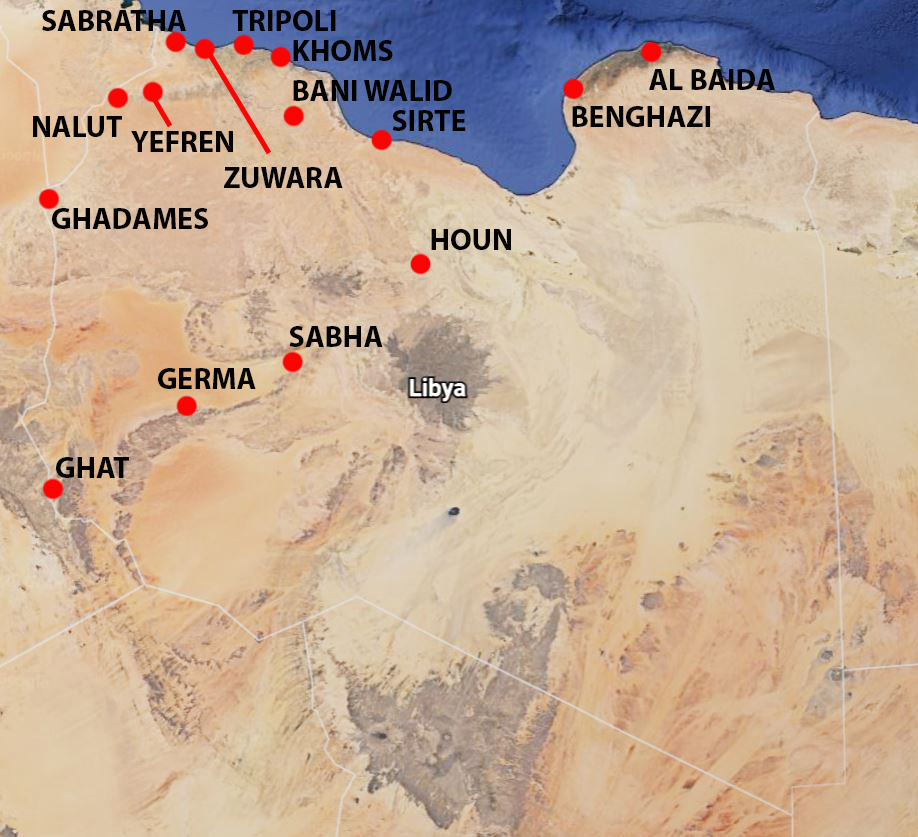
Cities served by the Museum in a Suitcase Project
Cultural Heritage Outreach and Awareness Events in Sabratha: One of these key partners is Dr. Mofida Mohammed, the Chair of the Department of Archaeology at the University of Sabratha. According to Dr. Mohammed, “The Museum in a Suitcase project is an important way for us to provide our students with an interactive experience of cultural heritage. Unfortunately, general knowledge about history and archaeology is relatively weak, and the suitcase provides us a way to teach these subjects in a more engaging way, rather than simply relying on a textbook.” In Sabratha, one of the five UNESCO World Heritage sites in Libya, Dr. Mohammed believes that this program helps expand the concept of local history. She added, “Most people believe that Sabratha is only a Roman city, but the materials in the suitcase help me describe our history as both Phoenician and Byzantine as well.”
Though her primary responsibility is to teach university students, Dr. Mohammed has also used the Museum in a Suitcase to raise awareness about cultural heritage protection among grade-schoolers as well as members of the local tourist police, the branch of law enforcement charged with the physical protection of the archaeological site of Sabratha and its surroundings. Dr. Mohammed added, “Given the difficult circumstances that we currently face in Libya, and the lack of resources at our university, these suitcase activities help both our students and the instructors forget some of the depressing aspects of our lives and focus on something we all care about: protecting our culture.”
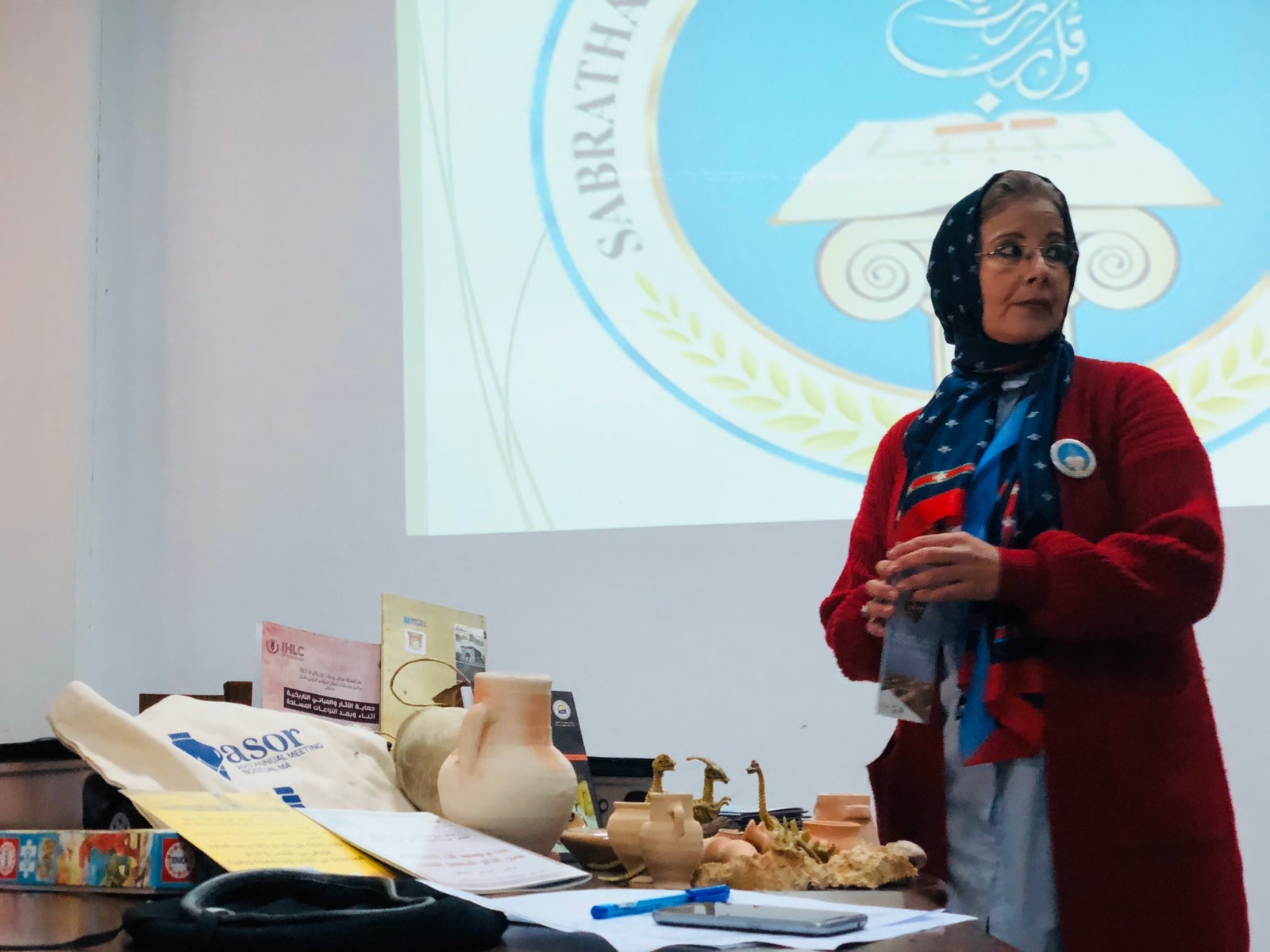
Dr. Mofida Mohammed Presenting to Tourist Police in Sabratha
Cultural Heritage Outreach and Awareness Events in Benghazi. In the second largest city in the country, Benghazi, the community has long aspired to found its own museum. They aspire to showcase a rich history that dates back to the founding of the city by Greek colonists in the 6th century BCE. Abedelhafed Elmsalaty has led the Museum in a Suitcase work in Benghazi, and is one of the most active participants in the country. While Benghazi is still endeavoring to recover and to rebuild following the siege of ISIS, Elmsalaty and his partners have managed to conduct 32 workshops (sometimes four to five workshops per month) using the Museum in a Suitcase to engage students of different age groups, ranging from preschool to university students.
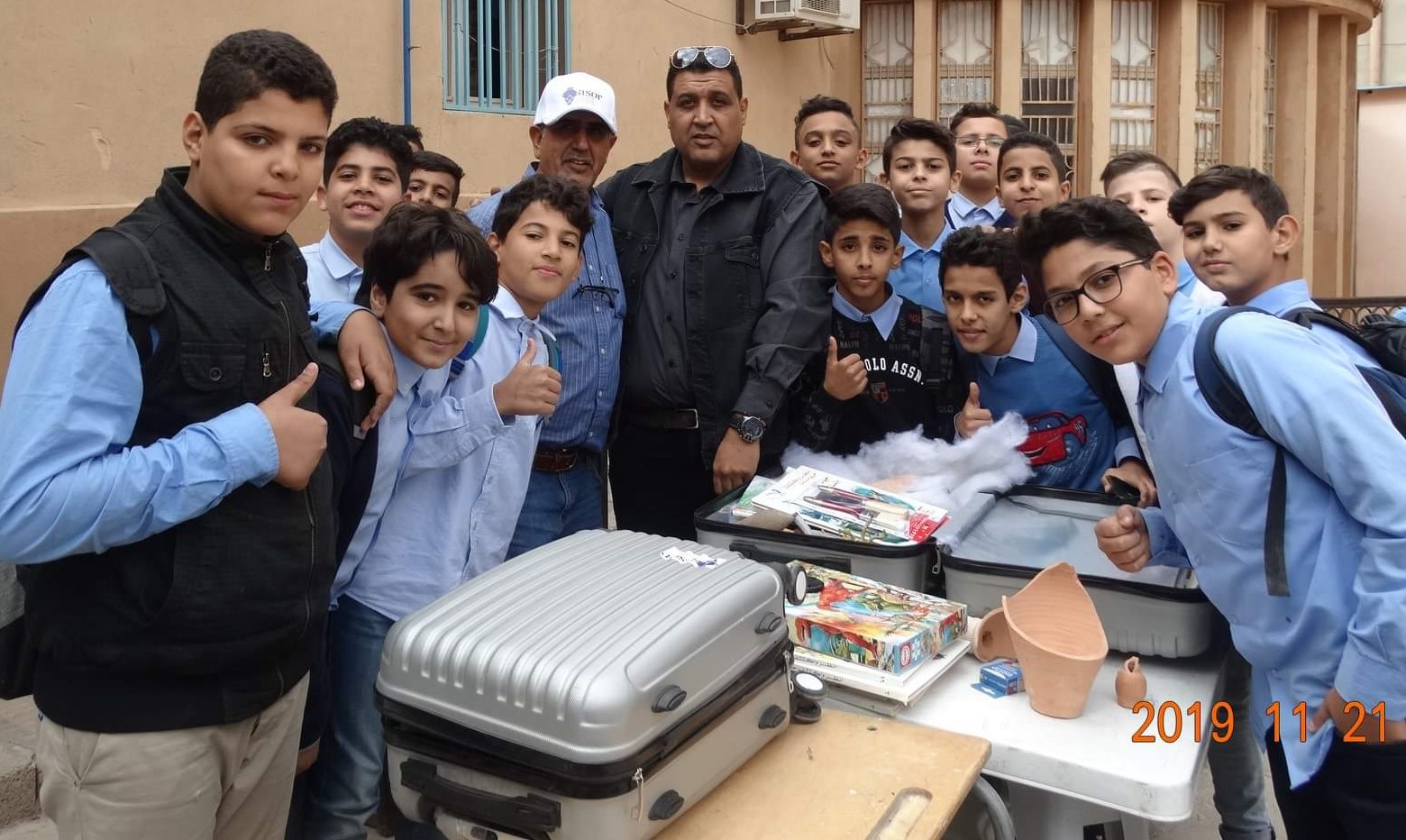
Benghazi Students Unpack the Museum in a Suitcase
In Elmsalaty’s estimation, the Cultural Heritage and Outreach Program made possible by the “museums in a suitcase” brings out the best in every student. These events help these children and youth discover new strengths, talents, and interests. The program leaders also provide training for teachers, pointing them towards new methods to enrich existing history and cultural heritage curricula. Increasingly, teachers and students in Benghazi (and indeed, around the country of Libya) are relying on the Museum in a Suitcase project as a key source for learning about history and cultural heritage. In Benghazi, this education has inspired participants to join Elmsalaty as volunteers to protect local archaeological sites.
The Future. Word has gotten out. Elmsalaty, Mohammed, and Bariun, and other workshop leaders (see future posts on the ASOR website for the work of other team leaders) now face a continuous stream of requests from local schools to bring the Museum in a Suitcase to students. The ASOR supported teams are plan numerous Cultural Heritage and Outreach Events throughout 2020, and hopefully beyond.
According to Talal Bariun, “Every week, I hear from at least one new person from around the country asking me to send them a bag. Most recently, a member of the Touareg tribe down in al Awaynat [an oasis town located in the southern desert] requested a bag, explaining that the local schools had failed to teach his children about their culture. This is the enthusiasm which has made us so proud to participate in this program.”
With each passing month, the group of young cultural heritage advocates grows. The ASOR and Scout leaders keep the group informed about volunteer opportunities to visit heritage sites and assist in their clean up. Despite periods of ongoing instability and outright conflict in Libya, participants have a gained a new appreciation for Libya’s rich past and are willing to play an active role in its protection.
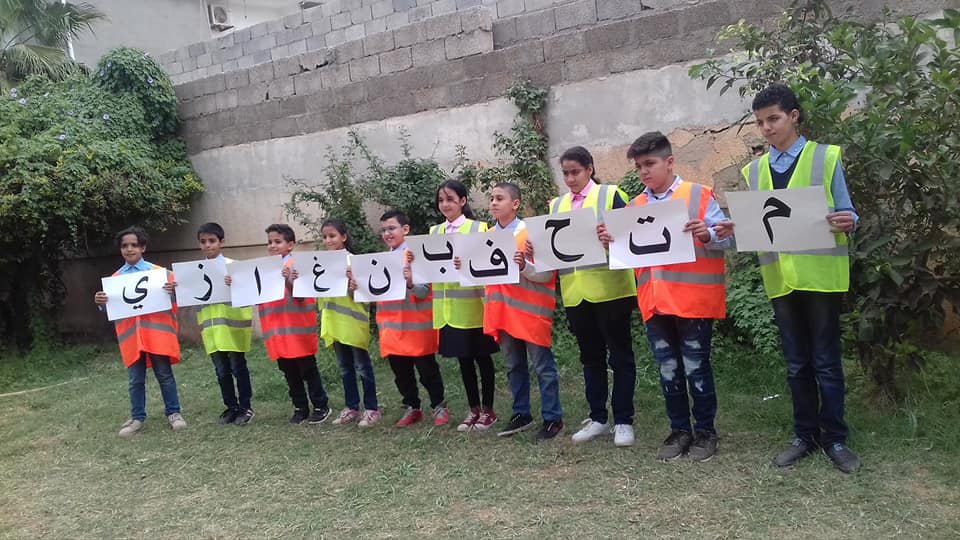
Benghazi students spell out “Museum in Benghazi” to advocate for the establishment of a new museum
Read about ASOR’s previous work in Libya using pop-up museums here.